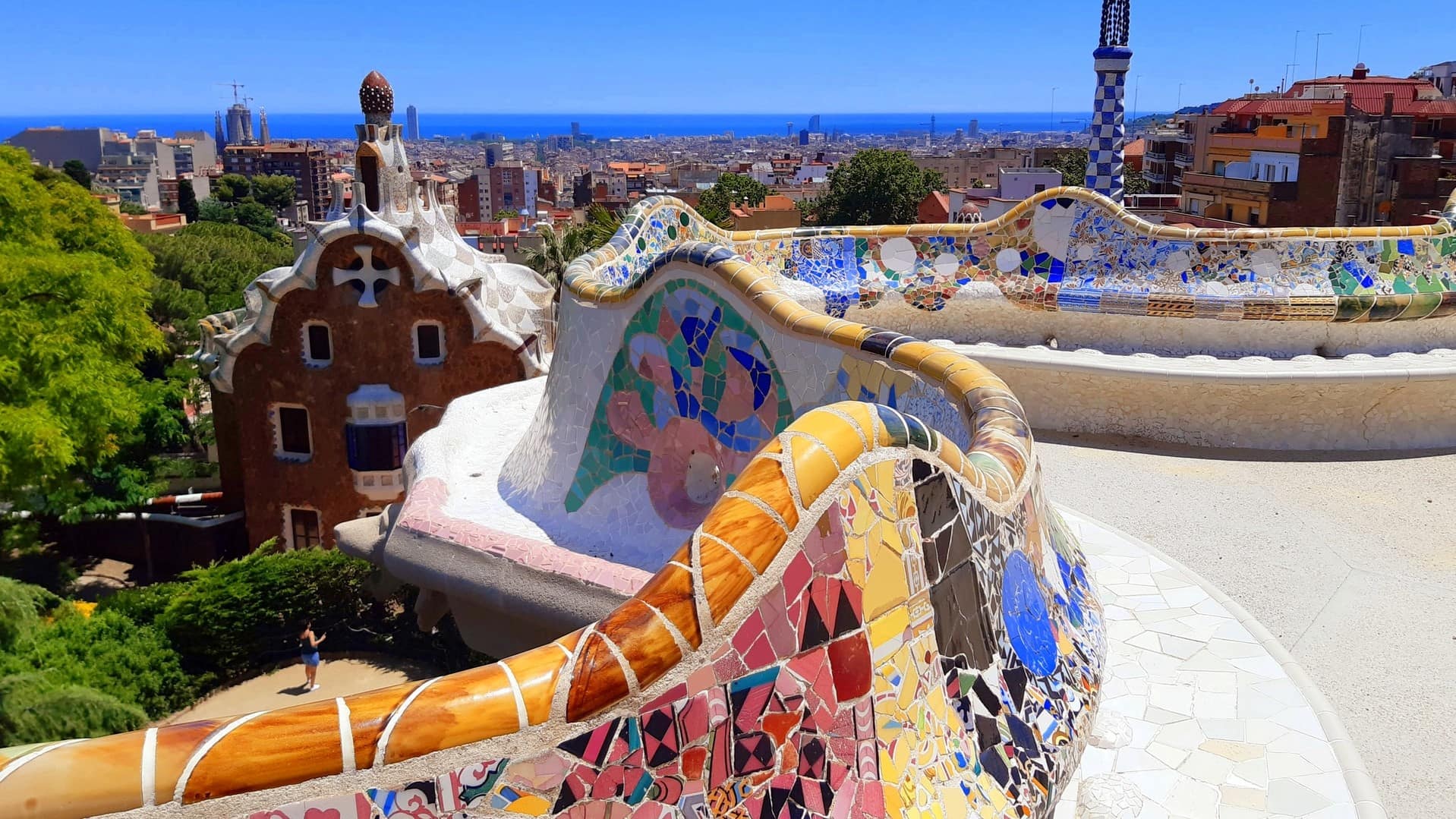Now welcoming locals and tourists with promenade superblocks!
This article by Daphne Kasriel Alexander originally appeared on Goodnet.
Most locals and tourists are enchanted by Barcelona. Whether it’s the iconic, colorful buildings of Catalan sculptor and architect, Antoni Gaudí, or the ambience of the center around the Ramblas, the famous promenade with its tree-lined strips and stalls brimming with exciting wares, leading down to the port.
But as the winter of the Pandemic’s freeze on mobility and so tourism slowly thaws, there’s another good reason to visit Spain’s second largest metropolis and the capital of the Catalonia region in the country’s north east. This is a development that puts quality of life on a pedestal!
Barcelona’s Superblock Initiative
The new initiative underway wants to make life in Barcelona even better by transforming public spaces to put the wellbeing of people front and center.
This strategy aims to pedestrianize miles of streets to improve life for people in Barcelona. The dream of what the city’s dedicated plan website calls the “Barcelona Superblock” is that the city will not be full of private cars and the pollution they generate, but that it will develop into the future with an emphasis on the needs of locals and visitors.
It will do this through a progressive pedestrianization plan that will boost travel by foot, bike and public transport, and so cleaner air. On the cards too are more public housing, playgrounds, restaurant terraces and much more green space. This ambitious project is aiming for a total 33 kilometers or 20 miles of pedestrian green spaces for people to walk , play and spend time in, reports the World Economic Forum. It also envisions 21 kilometers of bike lanes, more bus lanes and more frequent services to ensure congestion-free rides.
This approach is actually an extension of Barcelona’s superblocks initiative which launched in 2016, as part of a plan to cut the numbers of cars on the streets and pollution by creating “super islands” or superblocks.
Superblocks aim at switching the function of a number of streets from carrying cars to ensuring that neighborhood life, including local commerce, comes first. But this time, it is focusing on the heart of the city. As Cities Today details, “Twenty-one streets in the city’s central Eixample district [famous for its Modernist buildings and cool vibe] will now become a ‘super-superblock’, according to the mayor.”
A post-Pandemic mindset about urban renewal
It is no secret that the Pandemic has shifted our perspective on life and that it is acting as a catalyst for urban transformation. In Barcelona, for instance, there are many who have moved to rural areas in pursuit of better air quality and more outdoor spaces.
As Barcelona’s chief architect, Xavi Matilla, explained to the World Economic Forum, “The pandemic has functioned as a magnifying glass that has made us see that health should be one of the central aspects in the management and planning of the city.”
As Catalan News reported in 2020, The city’s mayor, Ada Colau, was moved to allocate a generous budget to ensure that some of the busiest city center streets would be pedestrianized and that related city changes had the best chance of being implemented.
Challenges remain. For example, the Pandemic has led to a marked decrease in people using public transport, and an even greater use of private cars. Before Corona, 26 percent of trips were made by private vehicle, and 37.3 percent using public transport. Currently 34.4 percent opt for private vehicles, and 19.5 percent for public ones.
The local municipality wants to reverse this trend, however, to reach 40.8 percent mobility on public transport, 35.3 percent on foot, 19.9 percent by private vehicle and 4 percent by bicycle.
It seems that a new-style Barcelona is on the horizon. In the city’s own words: “This is the Barcelona that we want: a Barcelona that is regenerated, adapted to the needs of our times, a friendly and sustainable city. A Barcelona that leads the way as a city of the 21st century.”
- Goodnet

Don’t miss out on a single article!
Enjoy unlimited access to over 500 articles & podcast that give you a positive perspective on the state of the world and show you practical ways you can help.








